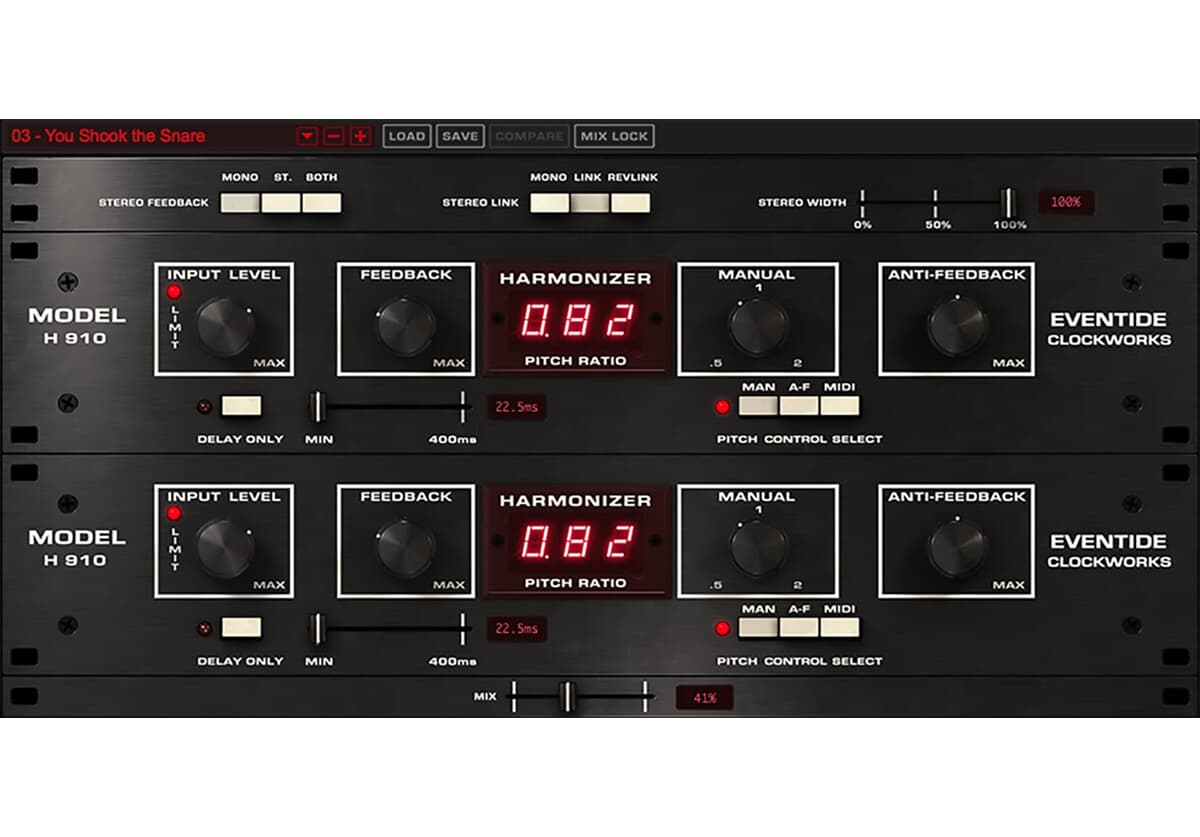
In ”Mono” mode, all controls can be set independently. The three buttons in this group allow you to more easily control the plug-in, by linking corresponding controls in the bottom and top units. In ”Stereo” mode, the output from the top unit feeds back into the bottom unit, and vice versa. In ”Mono” mode, the output from a single unit only feeds back into that unit. The three buttons in this group allow you to control the feedback routing between the two H910 units.

These controls effect the linking and coupling of the two H910s. H910 Dual Stereo (cross-unit) Feedback can cause the incoming signal to shift up and then down continuously. H910 Dual easily fattens and thickens instruments when assigning opposite pitch ratios. The H910 Dual plugin recreates the popular technique of running two H910 units in parallel to create lush doubling and other interesting effects. A custom analog-to-digital converter, compounding, filtering and analog feedback combined to give the unit a distinctive sound which this plug-in faithfully re-creates. It used simple digital logic gates and some of the earliest RAM memory chips but was, in large measure, an analog beast. The original H910 was a 100% software-free, analog and digital processor that predated the earliest practical ADC or DSP chips by several years.

True End To End Emulation & Dual Harmonizer Technique!Įventide has painstakingly modeled every section of the analog signal chain to recreate the sounds of the original H910. These authentic plugin recreations of the Eventide H910 and H910 Dual feature hundreds of presets and include a number of artist presets. The combination of glitch, randomness and analog signal path, especially when the feedback control was turned up, added an ‘organic’ feel to the sound and that feeling comes through in the plug-in. This was evident in the way that the display would flicker between pitch ratio readings. The system clocks at the heart of the design drifted and wobbled introducing a degree of randomness in the effect not found in later crystal-based, precise digital devices. The design predates the introduction of the CD and digital audio sample rate standards (e.g. In addition to the glitch, all of the quirkiness of the original H910 has been emulated. Not surprisingly, artists found creative ways to use the glitch and, in fact, years later when the H949 was introduced with advanced de-glitching circuitry, some users were disappointed that the glitch was gone. The original H910’s unique pitch change method introduced random ‘glitches’ into the audio and the word ‘glitch’ into the audio engineer’s vocabulary. Recreating That ‘Organic’ Feel – The H910 Glitch Is Back!


 0 kommentar(er)
0 kommentar(er)
